How many hinges and what size hinges would I need for a 265 pound solid wood front door with these dimensions: 3 ft wide x 8ft tall x 4 inches thick. We are on the oceanfront, lots of salt in the air. THANK YOU!!
Discussion Forum
Discussion Forum
Up Next
Video Shorts
Featured Story
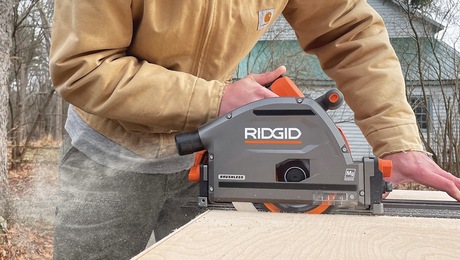
The best tool for straight, splinter-free cuts is made even better without a cord.
Featured Video
How to Install Exterior Window TrimHighlights
"I have learned so much thanks to the searchable articles on the FHB website. I can confidently say that I expect to be a life-long subscriber." - M.K.
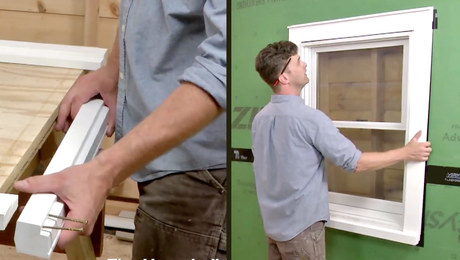



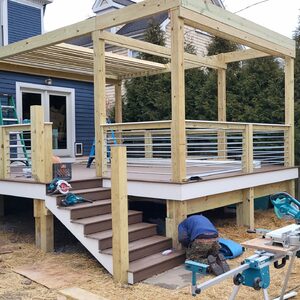









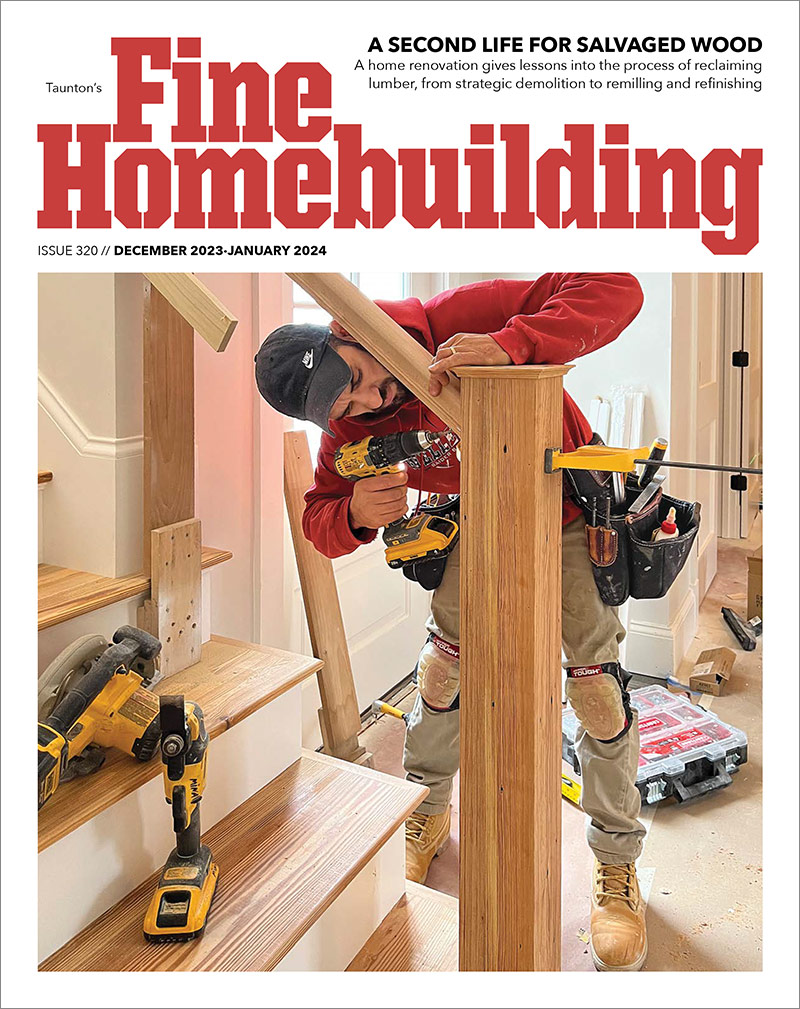
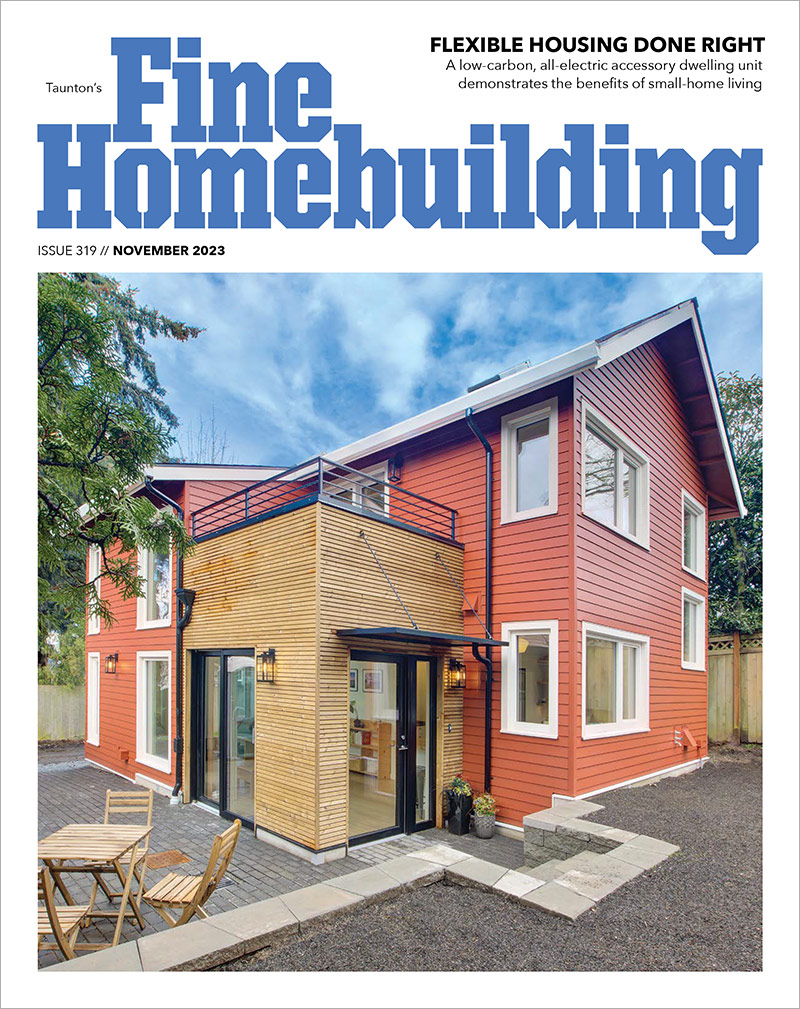

Replies
big as s ones
4" thick? goodness that is a BIG boy. On 8' doors you will normally see 4 hinges. 8" or even a wide throw hinge, do you already have lock set?
4 is usual and wide throw is a good idea for this thickness door. I would add that, being seaside, you should try to get stainless steel and ball bearing type barrel hinges if possible.
Doesn't seem all that heavy for a 4" thick door of this size. What's the composition? Photo?
I would use 4 5x5 ball bearing hinges preferably 316 stainless, but 304 stainless is more common and will weather OK.
Something else to consider.
The bigger problem you are going to have is the extreme bevel required on the opposite 'strike' side of the door. You can do a quick layout on a piece of plywood on the floor. Using a standard hinge...measure from the center of the hinge barrel to the opposite inside edge of the door - then measure to the outside edge. I think you'll find a difference of about 1/2". Both the the door and door jamb have to allow for this difference. On normal doors, it's not that critical, but on a 4" thick door, it's a problem. A typical way is to bevel the strike-side door edge..making the outside dimension 1/2" narrower. On a door this thick it means the jamb also has to be tapered or beveled to match......thresholds get all screwed up, etc.
A lot of installations like this end up using pivot hinges on the top and bottom of the door - this allows the door to pivot at the centerline of the door - as a result, the distance from the hinge pivot point to either strike-side door edge is equal. When the door opens, it will have the same clearance to the jamb as it does when it's closed. Another plus to this installation is no exposed hinge barrels. A problem with this type of installation it the door does not swing out of the doorway...it pivots inside the opening - narrowing the net opening dimension. Any chance you could make the door wider?
This is a good point. However, you can set the strike jamb at the corresponding door bevel angle rather than taper the jamb. I custom hang and fit interlocking thresholds for standard thickness (1-3/4") ext doors all the time, but I don't see this door thickness as being too difficult of an issue to overcome. You'd have to allow for this offset in your R.O. and account for your trimout being somewhat different on either side of the opening. However, interior and extrior trim conditions are usually different anyhow and 1/2" offset shouldn't overly complicate resolution.
Personally, I think a pivot hinge for a front entry is an awful way to resolve this issue because:
1. Not many people want to squeeze through an opening of 18 (+-)" when entering a home.
2. Depending on other entry options, moving furniture could also be problematic. You'd have to get to a 6' wide door slab in order to achieve the standard front entry width.
3. Weather sealing the two pivot points could be challenging; particularly seaside. I'd like to see the solution for this.
Anyhow, could be a nice architectural feature. But, I doubt accomodating above isssues are in the O.P.'s cards.
What???
Are you assuming the pivot is at the middle of the door opening???? Pivot hinges are commonplace for commercial doors...especially all-glass doors. The center of the pivot in this case could be as close as 3" from the 'hinge' side jamb. Add half the thickness of the door and you have a total of 5" or so intrusion into the finished opening when the door is fully open at 90 degrees. Actually, this could be less than a regular hinge on a door that only opens around 90 degrees. The advantage to a regular hinge is that it could open 180 degrees...That's why I asked to OP if he could widen the opening a bit...
I have used these for hidden doors that are bookshelves...a much thicker 'door' than this, but a great solution to a situation like this. In another instance we had a curved door made of redwood wine barrel staves 3" thick - and installed in a curved wall. The geometry of the installation was such that the perfect hinge solution was a pivot hinge - much like the OP's door.
There is some compromise in the weather tightness at the pivot...but may not be an issue depending on exposure, overhangs ets.
A Rixon model 370 should work perfectly - capacity is 500 lbs....Matt Risinger has a great video using these hinges:
https://www.youtube.com/watch?v=3HyttgJM7T0